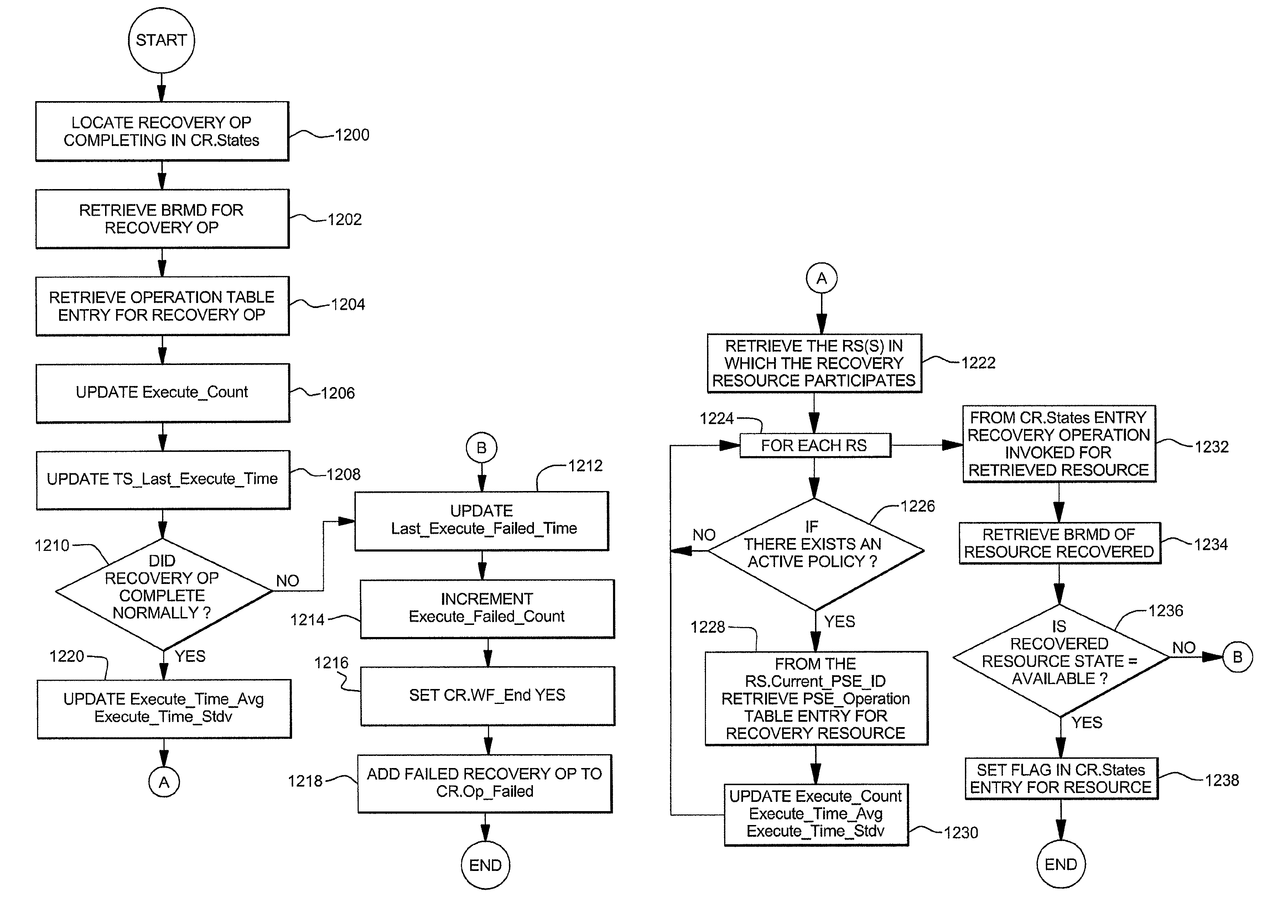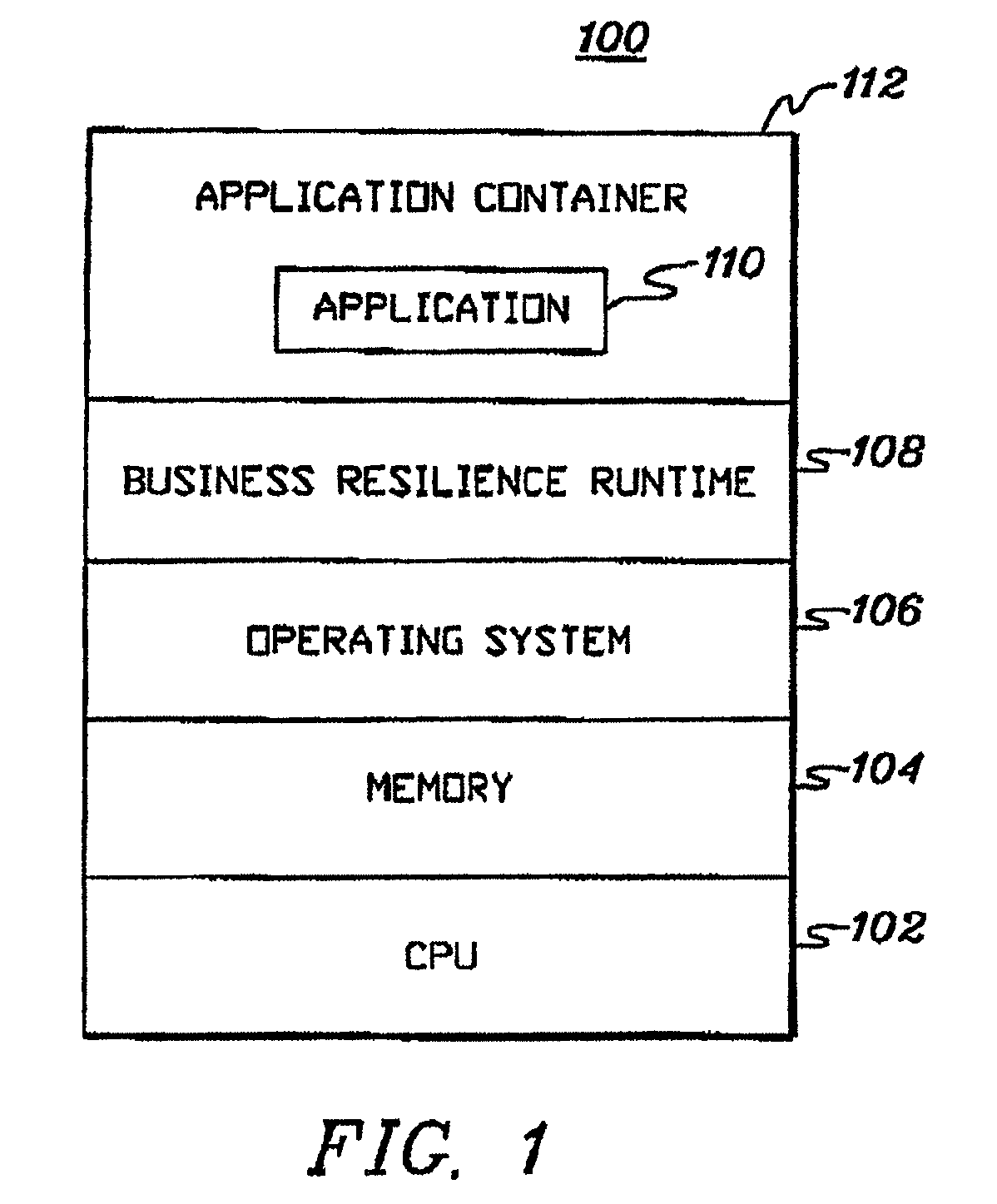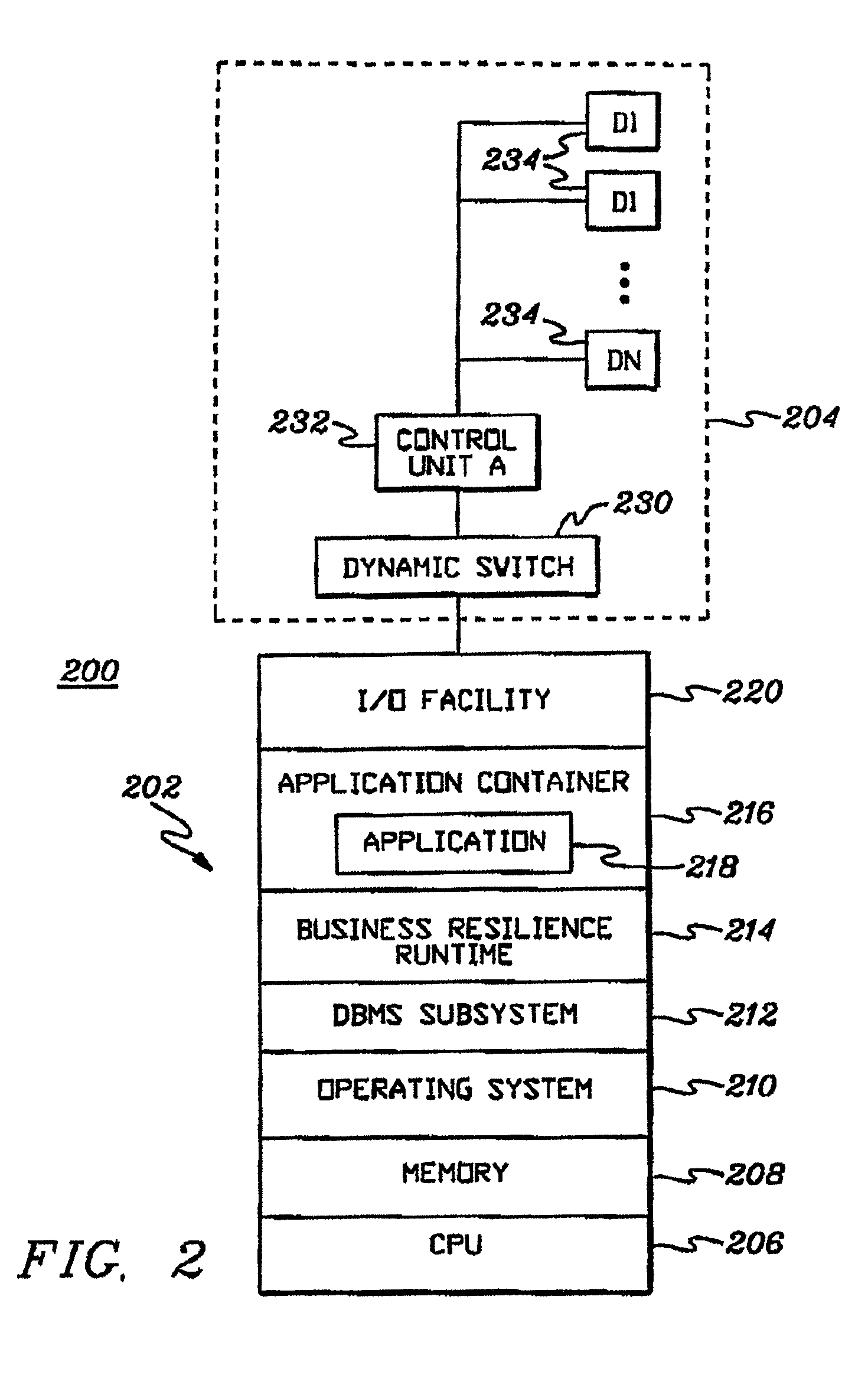Defining a computer recovery process that matches the scope of outage including determining a root cause and performing escalated recovery operations
a computer recovery and scope of outage technology, applied in the field of managing customer environments, can solve problems such as inflexible environment, proprietary and very specific, and more drastic and costly actions to be taken
- Summary
- Abstract
- Description
- Claims
- Application Information
AI Technical Summary
Benefits of technology
Problems solved by technology
Method used
Image
Examples
example 1
[0509]Assume there exists a resource, Res1, which has two states, unavailable and available, and an Operation A which transitions Res1 from unavailable to available. The BRMD for resource Res1 has an associated operation table entry for Operation A indicating it is a recovery operation. In one implementation, if Res1 is reported or detected to be failed, the recovery process locates Operation A as a potential recovery operation from the operation table associated with the BRMD and includes Operation A in the recovery process.
[0510]Extending this example, it may be that Operation A accepts one or more parameters which alter the execution of Operation A. Assume Operation A has one option for a cold start and one option for a warm start. Further, assume a cold start is desirable because it removes residual temporary data, while a warm start is desirable because it completes more quickly. A customer may choose the warm option during production times and cold off shift. Two operation tab...
example 2
[0514]Assume there exists a resource, Res1, which has three states, unavailable, available and failed. Further assume to transition from failed to available, Operation C, requires different processing than a transition from unavailable to available, Operation A. Also assume there exists an operation, Operation B, which transitions Res1 from failed to unavailable.
[0515]There exists two means to transition Res1 from a failed state to an available state. Either Operation C may be selected or Operation B followed by Operation A may be selected. For example, it may be that a database system has a Recover operation to transition from failed to available, a Shutdown operation to transition from failed to unavailable, and a StartCold to transition from unavailable to available. The operation sequence Shutdown, Operation B, followed by StartCold, Operation A executes longer than Recover, Operation C.
[0516]One approach may be to define two pairings where each pairing applies two of the failed...
example 3
[0525]Assume the existence of a subsystem, SubsysA, for which there exists a dependent subsystem, Depssa. Normal processing causes the dependent subsystem to terminate on failure of SubsysA. However, there are unpredictable conditions which may preclude termination of the dependent subsystem. For example, the dependent subsystem may fail to complete termination due to, for example, logic errors, serialization on resources held by other processes, failure of storage systems or network systems to respond. The following impact pairing and operation effect pairing would handle normal processing of the relationship between SubsysA and Depssa.
[0526]Impact subsysA (state, failed) makes_unavailable depssa
[0527]Opeffect (depssa, Start) sets (depssa, available) when depssa.state=unavailable.
[0528]Extending the example to address the failure of Depssa to terminate would add the following oporder pairing:
[0529]Oporder OSx, Cancel depssa before depssa, Start when depssa.state!=unavailable,
[0530]...
PUM
 Login to View More
Login to View More Abstract
Description
Claims
Application Information
 Login to View More
Login to View More - R&D
- Intellectual Property
- Life Sciences
- Materials
- Tech Scout
- Unparalleled Data Quality
- Higher Quality Content
- 60% Fewer Hallucinations
Browse by: Latest US Patents, China's latest patents, Technical Efficacy Thesaurus, Application Domain, Technology Topic, Popular Technical Reports.
© 2025 PatSnap. All rights reserved.Legal|Privacy policy|Modern Slavery Act Transparency Statement|Sitemap|About US| Contact US: help@patsnap.com



